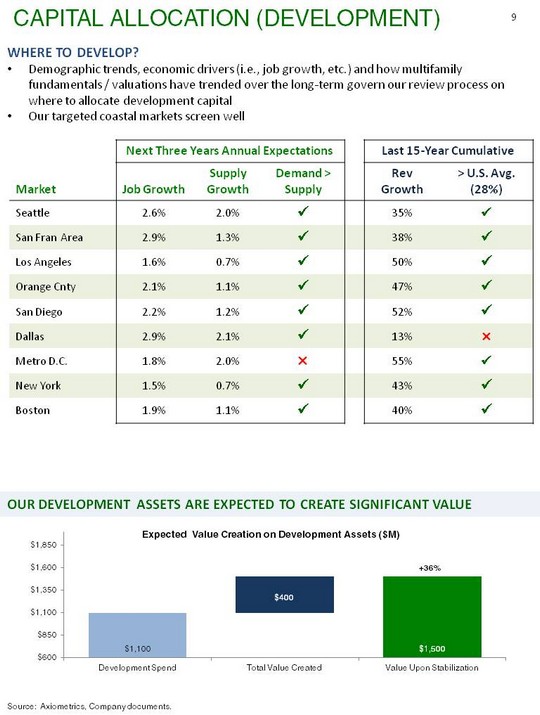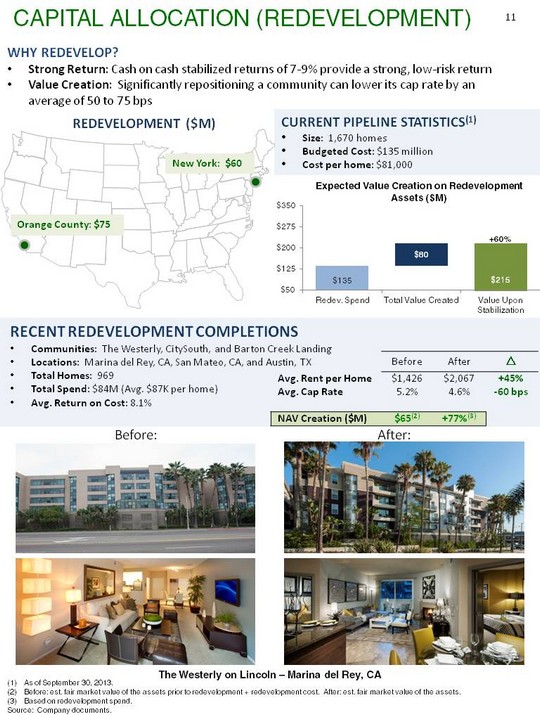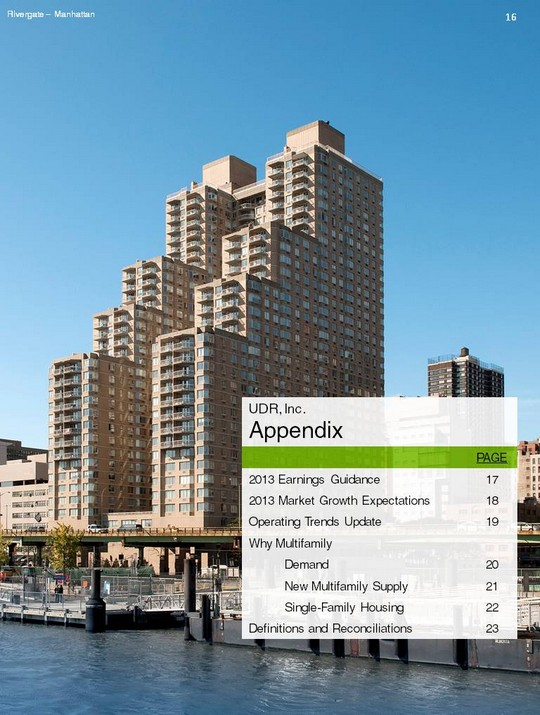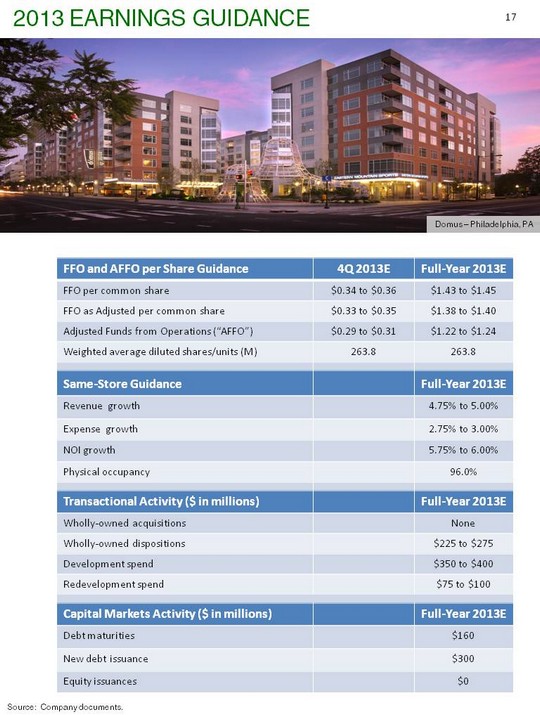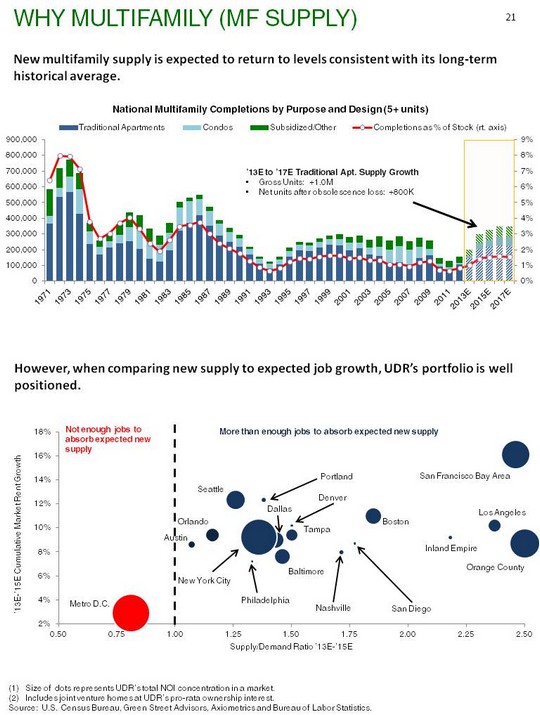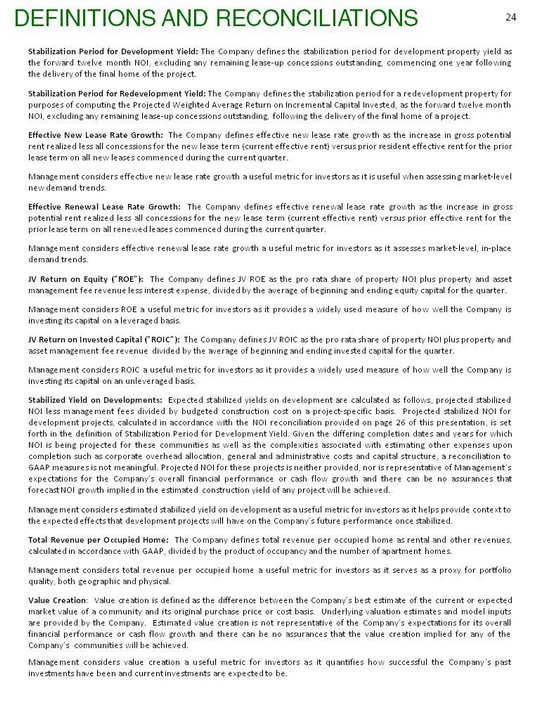| Net Operating Income ("NOI"): The Company defines NOI as rental income less direct property rental expenses. Rental income represents gross market rent less adjustments for concessions, vacancy loss and bad debt. Rental expenses include real estate taxes, insurance, personnel, utilities, repairs and maintenance, administrative and marketing. Excluded from NOI is property management expense which is calculated as 2.75% of property revenue to cover the regional supervision and accounting costs related to consolidated property operations, and land rent. Management considers NOI a useful metric for investors as it is a more meaningful representation of a community's continuing operating performance than net income as it is prior to corporate-level expense allocations, general and administrative costs, capital structure and depreciation and amortization and is a widely used input, along with capitalization rates, in the determination of real estate valuations. A reconciliation from net income attributable to UDR, Inc. to NOI is provided below. Net Operating Income ($000s) 3Q 2013 2Q 2013 1Q 2013 4Q 2012 3Q 2012 YTD 2013 YTD 2012 Net Income/(loss) attributable to UDR, Inc. $ 3,188 $ 5,192 $ (268) $ (12,300) $ (9,031) $ 8,112 $ 224,477 Property management 5,236 5,187 5,068 5,017 4,998 15,491 14,615 Other operating expenses 1,787 1,807 1,643 1,464 1,467 5,237 4,284 RE depreciation and amortization 84,266 85,131 83,442 83,456 88,223 252,839 260,604 Interest expense 30,939 30,803 30,981 30,660 31,845 92,723 108,132 Hurricane-related (recoveries)/charges, net (6,460) (2,772) (3,021) 8,495 - (12,253) - General and administrative 11,364 9,866 9,476 10,653 10,022 30,706 33,139 Tax benefit , net (includes valuation adjustment) (2,658) (2,683) (1,973) (1,628) (2,960) (7,314) (28,654) Income/(loss) from unconsolidated entities 3,794 (515) 2,802 2,757 719 6,081 5,822 Interest and other income, net (829) (1,446) (1,016) (1,157) (1,235) (3,291) (2,435) Joint venture management and other fees (3,207) (3,217) (2,923) (2,817) (3,320) (9,347) (9,026) Other depreciation and amortization 1,176 1,138 1,146 1,092 1,078 3,460 3,013 Income from discontinued operations, net of tax - - - (156) 1,133 - (263,183) Net income/(loss) attributable to noncontrolling interests 47 162 (41) (655) (645) 168 8,781 Total consolidated NOI $ 128,643 $ 128,653 $ 125,316 $ 124,881 $ 122,294 $ 382,612 $ 359,569 Definitions and reconciliations 26 |








